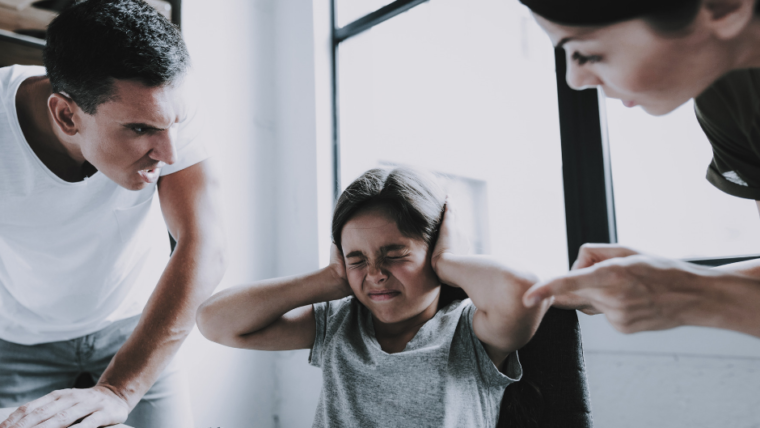
We work hard to raise independent kids. We cultivate their skills, listen to their worries, and peacefully handle their resistance. But we are also human. And we, as parents, have big feelings too. So what do we do when anger seems to take over?
I had a serious anger moment a while ago. It all could have gone so badly. But I was able to make a choice in the moment because I understood one important thing – anger is a secondary feeling. I knew I had a different more vulnerable feeling FIRST.
My daughter is 6, almost 7, and we went for a bike ride. Well, she rode and I walked (including pushing her up a big hill) 
She usually rides ahead and stops at the corners and waits. There are no streets to cross except one by our house. We have been practicing crossing the one busy street near our house for years and have worked up to her telling me when it’s safe to cross and after I check both ways, I nod and we go. That’s our normal plan and she’s generally pretty timid until I give the formal “OK”.

We were coming to the end of our usual route and, as I came to the corner, she wasn’t there. Ok, no big deal, she’s probably close. So I walked further up along our route… she is still nowhere to be found. Now the very busy street that is nearest our house was in sight and I still can’t see my daughter
I was getting scared. I asked a neighbor if he’d seen her. He said “no” and offered to drive around looking for her. Meanwhile, I texted my husband to see if she had made her way home. She had! She’d crossed the street and gone home! I told him I was scared and people were looking for her.
I started to make my way home. My daughter came running up the hill to me, crying and jumped into my arms. She felt so bad to have scared me.
I thought to myself “This is my chance. I’m going to tap into my fear. I consciously chose to not give in to anger. That was not my first, most authentic feeling. Nor was it the one I wanted her to hear. I had to be mindful that fear came first, before anger.
The Message
Me: A, I was so scared! You’ve never done that before and I didn’t know where you were or if you were safe! People were out looking for you!
A: I know Mama, Dad told me, I’m sorry!
Me: What happened?
A: I’m not sure I just thought I could do it.
Me: (Listening to understand) It sounds like you were feeling really brave.
A: (Relaxing) I was! I wasn’t afraid this time!
Me: That’s a big deal for you, I know. (now my message) Also…I was scared and I’m worried you’ll do it again without me knowing.
A: I won’t, I’ll tell you and ask if it’s ok next time.
Me: Ok that works much better for me. Thank you.
Anger is a secondary emotion. I was angry, but I had enough time to realize that I was actually scared. If I hadn’t recognized this, and gotten mad at her, I wouldn’t have discovered that she was brave. I wouldn’t have been able to problem solve with her. Communication between us would have shut down and her trust would have been broken because anger is almost ALWAYS received as a blameful message. I wanted her to hear ME not a voice of blame.
So how do we manage to not fall into the trap of unleashing our anger in the moment? How do we keep communication open?
Get in Touch with Yourself
What are you feeling? Is it anger? Anger is typically a secondary emotion.
What did you feel first? Communicate the primary feeling authentically.
“A, I was so scared! You’ve never done that before and I didn’t know where you were or if you were safe! People were out looking for you!”
Listen to Understand
Notice how the child responds to your statement. What is the child feeling? Why did they make the choice they did?
How were they feeling? Powerless? Brave? Scared?
“It sounds like you were feeling really brave.”
What are you feeling? Is it anger? Anger is typically a secondary emotion.
What did you feel first? Communicate the primary feeling authentically.
“A, I was so scared! You’ve never done that before and I didn’t know where you were or if you were safe! People were out looking for you!”
Develop Empathy in Child
When you share your authentic message with the child and listen to understand, you are keeping communication open. This allows the child to have empathy for you instead of resentment or fear.
“That’s a big deal for you, I know. Also…I was scared and I’m worried you’ll do it again without me knowing.”
Allows Child to Think and Process
A was able to problem solve on her own because she felt heard and understood. Listening with intent to understand meant that I could know the reason for her choice, and honor her needs, while also letting her take responsibility for problem-solving. And since she had a part in solving the problem, I know that I can trust her in this situation next time.
Identifying our own feelings is critical to move from anger to our more vulnerable, first level feelings, It allows us to communicate without blame, making space for the child able to hear our message. Mostly though it moves closer to a trusting and lasting relationship that we can enjoy through a lifetime.
Here is some more information on managing our own anger with my friend and colleague, Catherine Dickerson.
Other articles you may enjoy:

[…] The Secret to Staying Calm When You’re Mad – Respectful Parent […]